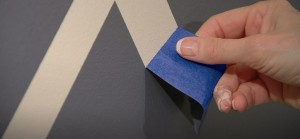A major manufacturer of high-end kitchen blenders has the base for each of its various models produced by several injection molders. The injection molders produce the part, apply an adhesive-based film to protect the surface and then ship the base to the manufacturer for final assembly into the retail-ready product. However, the injection molders and the manufacturer noticed that the strong adhesive on a competitive protective film product (sourced via a reseller) would frequently cause delamination of the acrylonitrile butadiene styrene (ABS) or polyvinyl chloride (PVC) blender base. The delamination made the base look like it was nicked and scratched.
 Due to the high-end nature of the product, these defects would cause products to be rejected creating a high scrap-rate situation and a less than happy manufacturer. Both time and money was being lost throughout the manufacturing chain.
Due to the high-end nature of the product, these defects would cause products to be rejected creating a high scrap-rate situation and a less than happy manufacturer. Both time and money was being lost throughout the manufacturing chain.
One of the injection molders challenged the company to come up with a cost-effective, performance-oriented solution.
The first step was to conduct a material evaluation. The part was sent to the lab for a thorough analysis to determine what adhesive would work best for the application. Initially, the hot parts coming out of the injection mold was thought to be the primary cause of the problem. However, further testing showed that the material continued to delaminate even when the film was applied after the product cooled.
After extensive review and testing, a film with a significantly lighter adhesive was recommended. However, the delamination issue was not completely eliminated. The resin supplier felt that the Surface Guard adhesive was causing the blender base to delaminate. The lab was able to prove that the problem was a defective resin product, which was exacerbated by the film adhesive.
The solution was modified by producing a very low tack adhesive film that was strip coated (a 1-inch adhesive strip on either end of the 5-inch wide roll) instead of fully covered, to keep contact at a minimum, yet still provide adequate protection.
To apply, the film is fed through a roller assembly and manually placed onto the base by a line worker. The operator uses a turntable to rotate the base and apply light pressure to the film so that the pressure sensitive adhesive bonds with the part. The protective film is also perforated every 8.5 inches to facilitate further assembly at the manufacturer’s plant. (Workers there have to peel down the film to apply knobs and then put it back in place to protect the blender in transit.)
The protective film is now being used by all five injection molders supplying the blender company.


